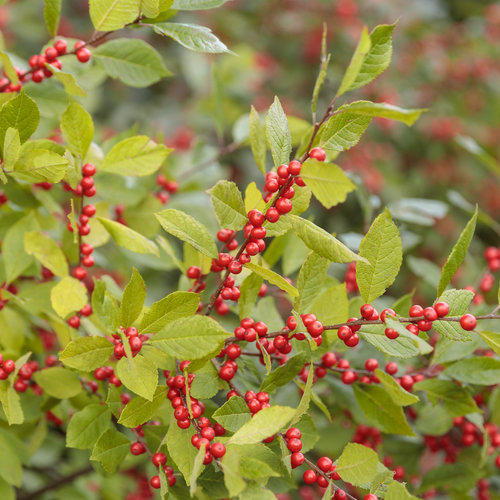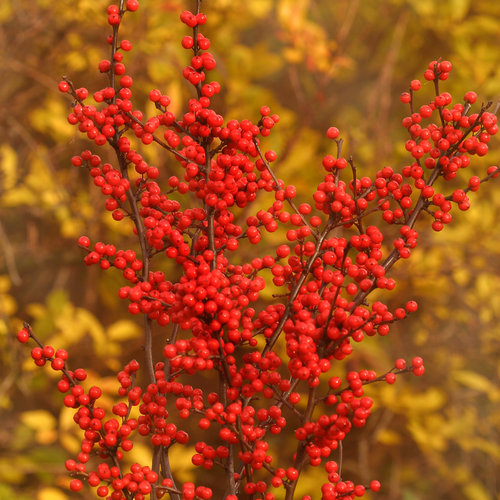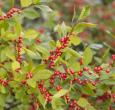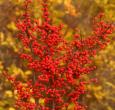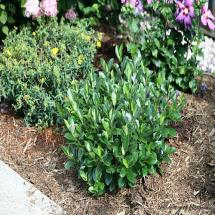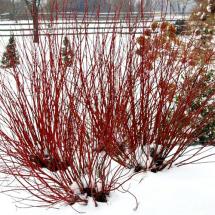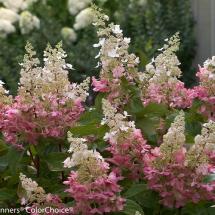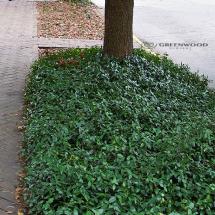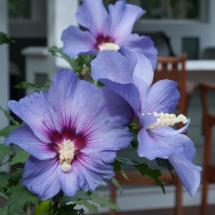Free gardening gloves when you spend $75.00 or more!
Description
Brighten up your landscape for the holiday season with BERRY HEAVY® Winterberry Holly.
The Mr. Poppins is a male winterberry that is used to pollinate Berry Heavy® Ilex verticillata which is a female Winterberry. You'll see lots of very small flowers on the Berry Heavy Winterberry Holly which is a deciduous flowering shrub, but without a male pollinator, it will not fruit. It has attractive, dark-green, healthy foliage and makes a rounded, compact flowering shrub that grows 3 to 4 feet tall and wide. One Mr. Poppins male Winterberry can pollinate up to 6 nearby females.
Our 2 plant Berry Combo kit includes:
- 1 BERRY HEAVY® FEMALE plant (the bright red berry producer) and
- 1 Mr. Poppins MALE plant (the pollinator) to ensure best results.
You may purchase additional BERRY HEAVY Ilex shrubs separately. Plant a row or mass planting of these great berry producers for use in holiday floral arrangements or just a bright holiday display in your landscape.
Berry Heavy® Ilex verticillata 'Spravy'
Uses for winterberry shrubs:
Great for use in the landscape, excellent winter interest. Beautiful for cuts to create holiday displays. Use in groupings and mass plantings, as perennial or shrub border plants. Good as specimens, screens, or hedges.
Features
Vivid red winter berries are great for cuts or adding color to the landscape. May be pruned in late winter/early spring. Use Mr. Poppins as pollinator. Mildew resistant. Native holly plant.
Growing Tips
According to the Humane Society of America Ilex berries can be toxic to pets. This is means that the plants are generally identified as having the capability for producing a toxic reaction.
Adaptable to wet soils, does well in light and heavy soils. First class pick for planting in saturated areas. Best if pruned in late winter or early spring. No pruning really necessary unless removing dead/broken branches. Likes high moisture. Native to swampy and boggy areas. Fertilize in early spring by applying a slow release fertilizer specialized for trees and shrubs. Follow the label for recommended rates of application. Use 'Jim Dandy' as pollinator.
About Winterberries: Winterberries are the "queens" of the fruiting shrub world when ranked for ornamental value. From early fall through winter, the branches are covered in bright-red fruits. The fruiting branches are great for decoration in the garden or in the house. These plants have multi-branches, so clipping a few doesn't take away from the appearance of your mature plants. Or leave the branches for the birds since over 40 species of birds are known to eat the fruit, including: bluebirds, brown thrashers, cedar waxwings, flickers, gray catbirds, mockingbirds and robins. The dense branching also provides shelter, cover and nesting spots for birds.
The leaves of Winterberries are thick and dark green and contrast well with the red fruit. The foliage stays healthy all summer and isn't bothered by insects. The leaves drop off the plant in late fall to expose the beautiful berries. You'll need both male and female plants to produce fruits, with one male for up to 6 nearby females. Plant in sun or part shade. They like moist to wet, slightly acid soils. Winterberries are native to North America, no garden should be without them.
Hardy from Zones 3 to 9. Grows in full sun to part shade in moist, garden soil. Can tolerate wet conditions. Space 3 to 4 feet apart. To get berries, be sure to plant one male for every 6 nearby females. Berries will be on female plants.
Berry Heavy® Ilex verticillata 'Spravy'
Shipping
Order as 1 combo which includes: 1 Mr. Poppins plant in quart container and 1 Berry Heavy plant in quart container.
Or, additional Berry Heavy Winterberry plants in quart containers.
Plants shipping to west coast addresses may be bare rooted before being prepped for shipping.
- Category: Shrubs, Flowering Shrubs, Privacy Hedge Shrubs, Fast Growing Shrubs
- Plant Type: Deciduous
- Light Requirement: Full Sun, Partial
- Soil Condition: Well Drained, Moist, Wet
- Bloom Season: Spring, Summer
- Mature Height: 6 - 10ft
- Growth Rate: Fast-Growing
- Planting Zone: 3, 4, 5, 6, 7, 8, 9
| Quantity | 1 - 4 | 5 - Unlimited |
|---|---|---|
| Price | $22.95 | $21.95 |




